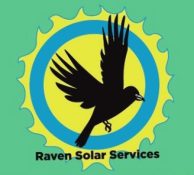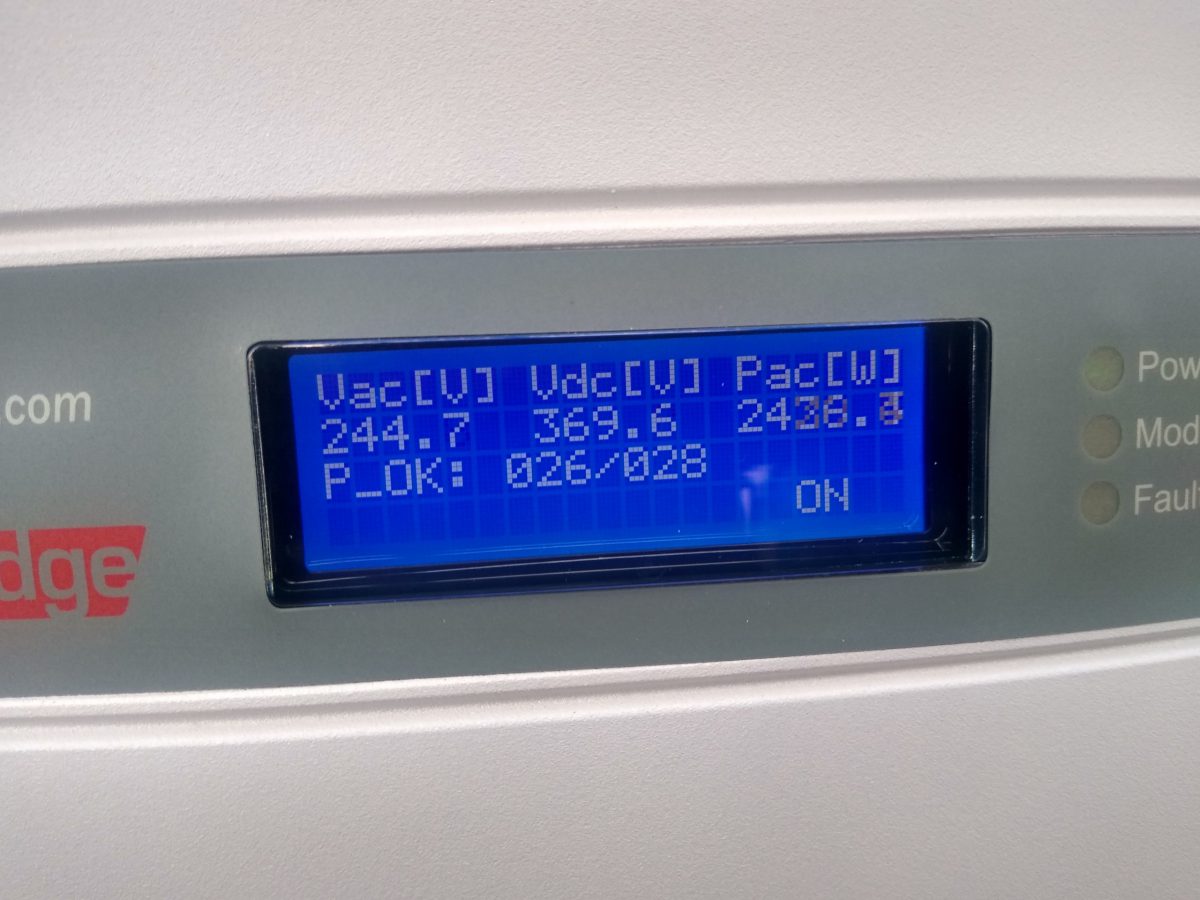What to expect from Residential Solar.
Residential Solar is intended to offset the energy you would otherwise need to purchase from
your utility company. Offset is calculated as a percentage of the amount of energy your home
consumes on an annual basis. A 100% offset implies that your entire energy requirement
would be satisfied by solar energy under ideal conditions. Unfortunately conditions will not be
ideal. Cloud cover, rainy days, shade from trees and buildings, smoke, snow or other debris
on the panels, and panel placement all affect energy output. Latitude, elevation, and roof
facing direction affect solar energy generation, but are constants that can be compensated
for. Because of the uncontrollable variables an offset of at least 120% is typically used But now up to
200% with Xcel. Check with your utility provider for any limits they may impose. Your utility
provider may require plan approval prior to installation. Your utility provider will likely also
require an inspection before authorizing a “Permit to Operate”.
Topics:
How big of a solar system do I need?
Qualifying Roofs and roof conditions
Should I Add Critter Guard to my system
Solar Inspection and panel washing
___________________________________________________________________________
To begin to answer this question above. I would start by looking at the companies reviews? If you want to dig further you might be able to pull up inspection reports from the county. Are they failing a lot of inspections or is the county the problem taking on so many codes and compliant issues. With a new house the standard is to go off the total Square feet of the home. If that is not known we would need to look at your bill and get the answer.
How big of a solar system do I need?
The Amount of solar you might need for a system depends on your usage. You can’t just add a ton of solar panels and be like here I am utility company. The power company does not want home owners being energy providers (imagine that). In order to get a system you will need to know how much power you have used for one year in kilowatt-hours (KWH). Having the actual numbers we can build a system. If your roof is a good candidate with a south, southwest, west, or east roof your install company should be able to get your power offset to the total percentage allowed by your utility of your total usage. When considering any solar deal always try to get your offset as close to 100% or more if it is possible, otherwise you might just be supplementing you power usage instead of eliminating it. Power from the utility company is what we are after here?
Start by Calling your utility company or getting 12 months of electrical usage.
your bill laid out with all the months
| Jan | 343KWH |
| Dec | 283KWH |
| Nov | 229KWH |
| Oct | 210KWH |
| Sep | 335KWH |
| Aug | 289KWH |
| Jul | 376KWH |
| Jun | 320KWH |
| May | 184KWH |
| April | 202KWH |
| Mar | 210KWH |
| Feb | 471KWH |
| Total | 3452KWH |
When you have an idea of how big a solar system make sure you add 120% is typically allowed for most utility company’s. Don’t sell yourself short by keeping your offset at 100% Or lower. Some company will only try to lower your electric bill. 120% is/was the standard some jurisdictions allow for even more offset. You want more than 100% for the cloudy days or seasonal times so you can build a bank through times.
How does solar work?

The solar panel will turn sunlight into direct current electricity that is known as (DC) electricity. Solar Panels create Direct Current or D.C. which is always on. Compared to Alternate Current or A.C. which has a frequency of 60hz (America) and cycles from positive voltage and negative voltage. Since AC was the deciding factor due to the cost of DC products and the size and requirements A solar inverter (see inverters) is connected to your solar panels and then sends the power back to the grid or to a storage device or battery. Which type of inverter or solar panel you need depends on your roof variables and location.
Photovoltaic means Capable of producing a voltage when exposed to radiant energy voltaic, especially light Photo.
roughly there are three spectrum of light; ultraviolet light, visible light and infrared light.
Ultraviolet light is not visible and breaks down atoms, its the destructive kind of light the sun produces. It is damaging to PV modules and also to humans skin.
Visible light is the usable kind of energy that causes the electrons to react In the photovoltaic modules.
Infrared light is heat that comes in with the light from the sun and is the lower form of energy used for other properties like solar thermal.
The spectrum of light is important because there a thing is cell degradation which is caused by UV and eventually breaks down the solar cells.
Edmond Becquerel, was a French physicist who studied the solar spectrum, magnetism, electricity and optics. He is credited with the discovery of the photovoltaic effect (The photovoltaic effect is the generation of voltage and electric current in a material upon exposure to light. It is a physical phenomenon.) The operating principle of the solar cell, in 1839.
how do solar panels work.
Types of power and inverters
Any solar energy you don’t use excess generation goes onto the electrical grid or is stored in a battery for future use. The inverter handles the transfer to the grid or to the house. Sometimes if you produce enough the Power company may buy your solar energy.
You will “ALWAYS” use an inverter for solar. Three Types of inverters are String, Optimizers systems and Micro-inverters.
Types of Inverters
String inverters transform the power of DC Direct current to AC alternating current to homes for their use. They need to be replaced every 3-15 years or so. If you have a solar panel system that’s at least five years old, you may want to think about swapping your existing inverter for an all-in-one option like ones either set up for future expansion and adding a battery or generator. Or maybe you have a solar system and thinking about adding something to it. Some batteries have built-in inverters (Island Battery-based inverters). They are becoming very reliant on the internet to diagnose faults. They can also be stacked to add for expansion or to fit. Fronius Primo
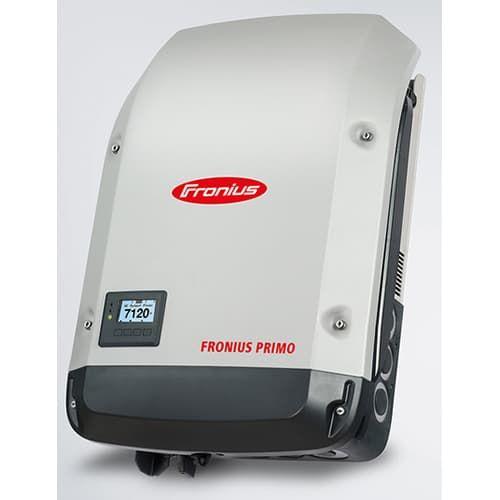
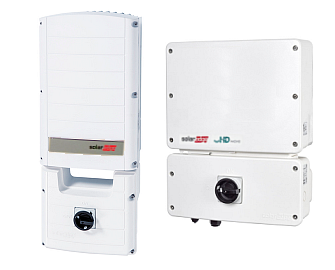

Micro-inverters turn the power at the module into usable AC power and are attached to each solar panel, they are also smart technology and are tied to the internet for energy production reporting. They turn each panel into their own system in case something happens to one of the solar panels, shade, truck damage, hail damage. They must be mapped in order for them to work using the QR codes attached to them. The drawback is you must have an app or be logged into a system to view the panels’ production and are also still a little bit more costly but the prices have come down. Micro- Inverters operate at a lower voltage and can turn on faster than a string inverter and also shut down later in the evening. If they are all installed correctly with no problems they should send monitoring data to the host site displaying the correct data for their production. if they look like any of the photos below they have a problem. some companies we would recommend for this would be AP Systems and Enphase energy.
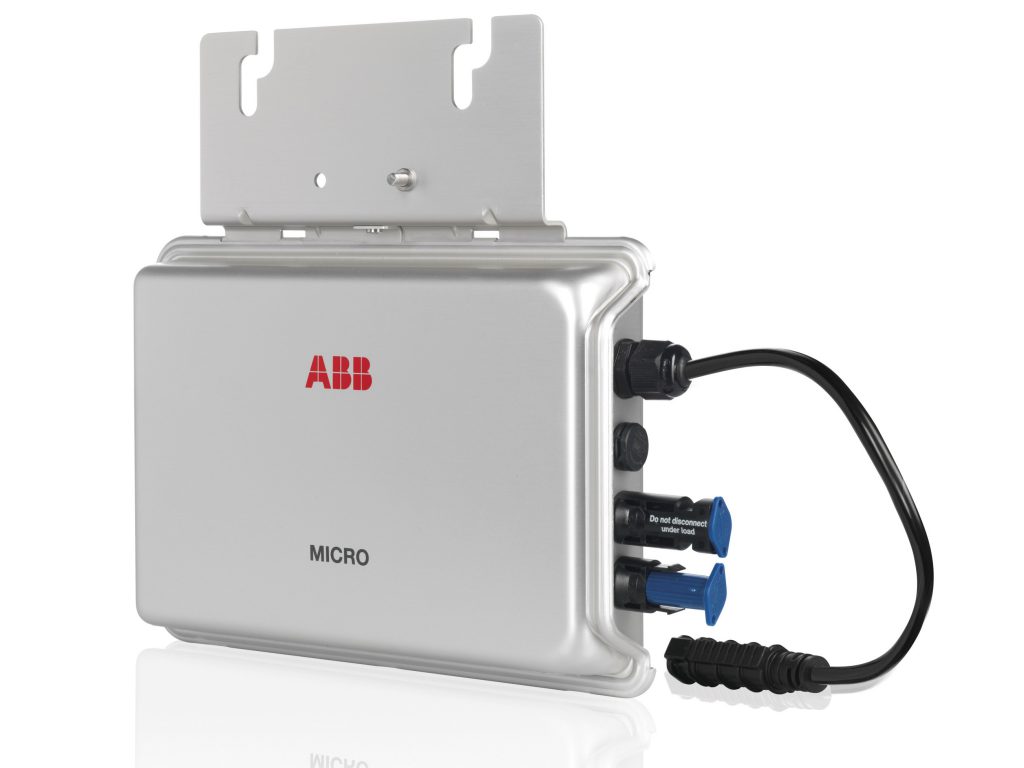


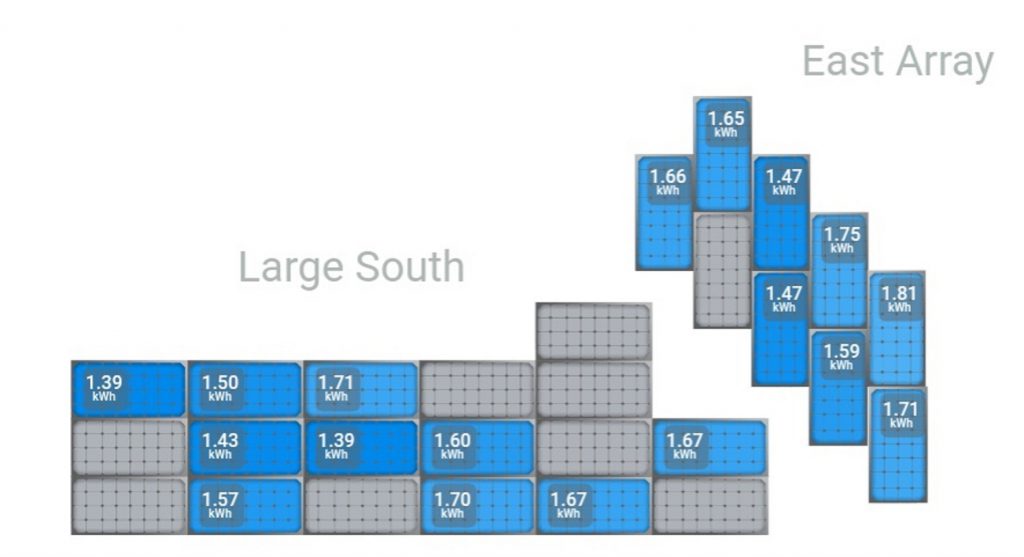
Optimizers do almost similar things as micro-inverters except they still have a string inverter. The only difference is the one inverter. they can be internet-based and app based for monitoring the solar system as well. They must also be mapped in order for them to work using the QR codes attached to them. If you are a home owner make sure you get the Solar Edge Monitoring App. Do NOT USE A THIRD PARTY APP (Tesla, Sun Run unless you have batteries that are different brands than Solar Edge), as they typically do not have an array map with them showing your entire system and each panels production.

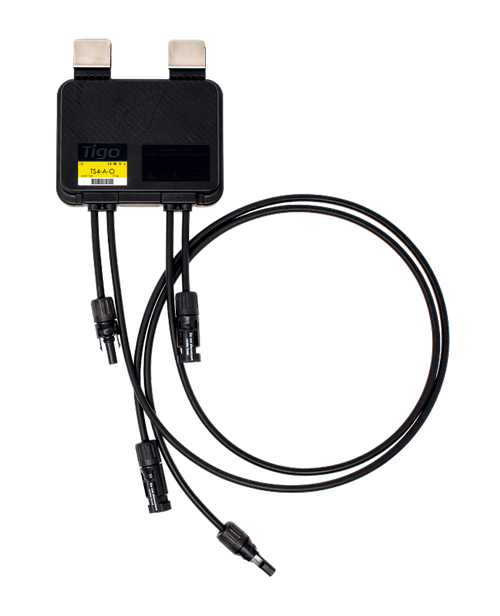
Functions: Optimization,
Monitoring,
Rapid Shutdown
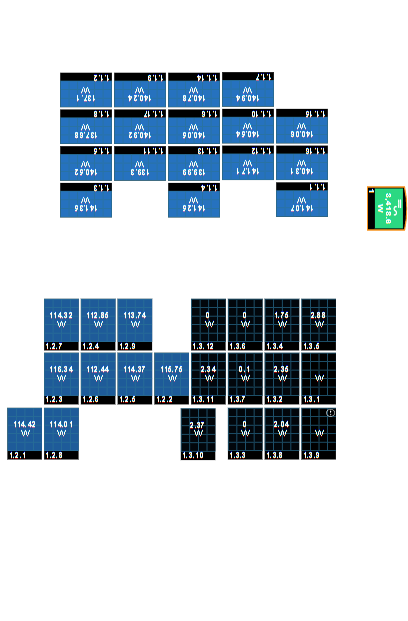
Solar Panel Technology
Traditional simply collects light and can be affected by shading, snow or soiling
Half Cell or Split cell technology works by splitting the panel in half and allowing two separate panels essentially allowing shading to not affect one side of the panel’s production as much. which might be for systems that have trees.
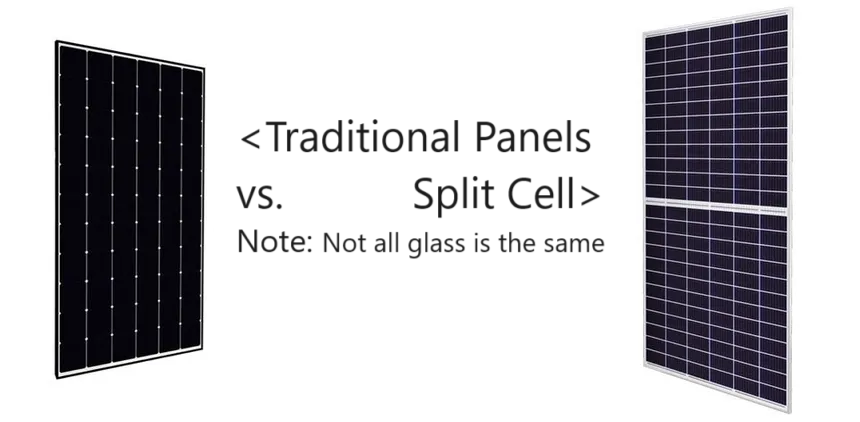
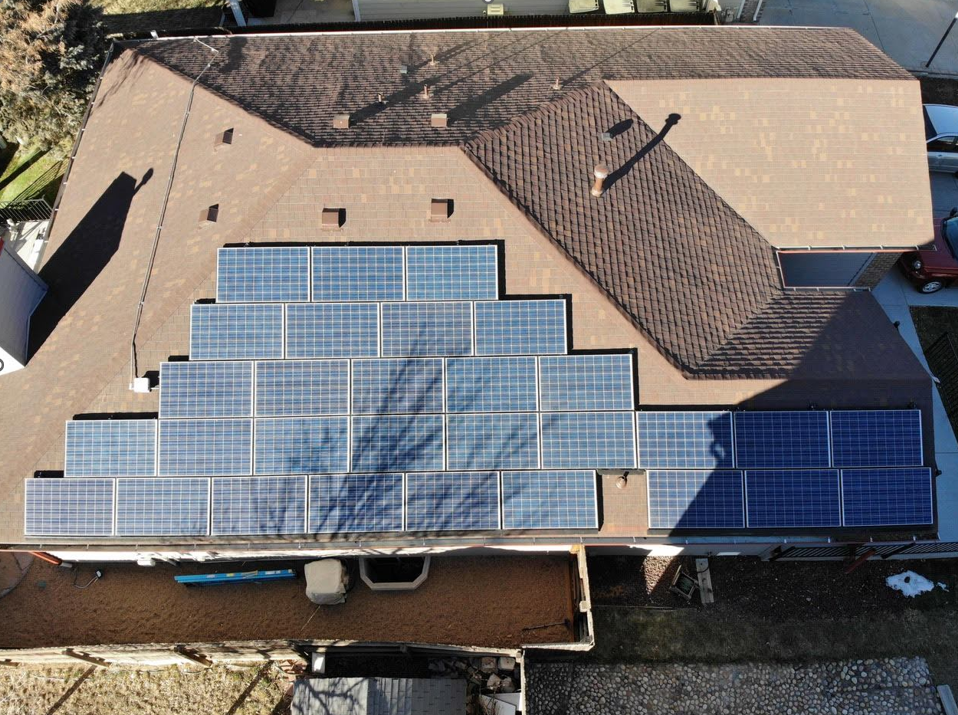
•Solar Panels: What is available 2015 VS. right now
•2015> 250-280 watts range
•2022> 355 watts – 490 watts!
•2024> 420-585 Watts
Eventually it will not make sense to keeping making the panels produce more power. There will be a plateau where cost and benefit will become a factor. Also, what might happen next as the technology develops is that the efficient of the solar panels right now are still just 18-22% efficient at capturing the light. This has to be the next step in the research and development section. They are going to have to make the panels better.
To Lease or Own your solar system?
Leasing isn’t always the better option but there are good things about it. One good thing is that if the company is still in existence they can maintain the system for you in case of damaged panels, bird nests or squirrel damage, inverter failure, etc. Though they might sub-contract this work it’ll get done. Their main focus is on new installs. We have even had Sun Run customers call us and the homeowner has to spend money on some of these repairs rather than have them call us. It’s quite frustrating knowing we are here them not taking care of a leased system.
Also, if your power generated is lacking as per terms of your contract you might be stuck with paying for the panels and still have a power bill. so you’ll have two extra bills until the life of the contract expires. Make sure you are getting the maximum power offset if you lease. If you do not you will hate solar and have created two bills.
Owning might be better a better option and you can add the value to the home when you sell it. According to this source. With Owning a solar system your responsibility for all maintenance, upkeep and even new roofs (solar system removal and reinstall for newly redone roofs). It is like owning anything else and sometimes it requires some maintenance. Producing all your immediate power is a value to the home!
Qualifying Roofs and roof conditions
Some roofs may not qualify for solar installation. Wood shingle roofs are an example of roofs that might not qualify. Some types of roofing tiles may not qualify for solar installation due to tiles getting damaged.
One thing to keep in mind is the time it takes for the solar company to install the solar system. The more people are physically walking on your roof and the amount of time they are up there working the more damage gets done to the roof. Each mounting system and system design is different so the time it takes can vary. The Whole installation ranges to hours, half a day, up to three days, depending on; the installation size (panels and watts), The Solar System Design, your installers, and electricians. You want the installation to be flawless and take no more than a day because at that point the roof is going to be stressed and possibly needing some new shingles depending on what quality they are as well.
Never Hire a contractor. They typically mark everything up. Always let the roofer do his work and a certified company do the work for the solar. Today’s systems are very complex and may not be just a simple remove the panels and reinstall them. It depends on what monitoring equipment the system has and are they connected on rail or feet. do the panels need to be physically installed in the same place or do can they be put anywhere? if they aren’t installed as per the map uploaded into the monitoring site and installed all over your roof they wont display the correct information.
Damaged roofs
If your roof does get damaged badly by hail or wind. go up and check your roof first for damage before you get sucked in by that roof salesmen whose looking to make some quick money. Typically they will go up and make little markings on the roof and make it a chore to get your insurance to pay for a new roof when your roof is probably fine. Hire someone or talk to someone qualified to get up and look at the roof. Typically it is not that damaged. Trust me I know. don’t be like owner in the video they are costing us our insurance premiums!
if your roof does get damaged badly by hail or wind. go up and check your roof first for damage before you get sucked in by that roof salesmen whose looking to make some quick money. Hire someone or talk to someone qualified to get up and look at the roof. Typically it is not that damaged. Trust me I know. don’t be like owner in the video they are costing us our insurance premiums! once you get the roof replaced your insurance or someones will go up for the for profit industry. Here is a video of us removing a system on a perfectly good roof.
If your roof is thrashed, they will have to remove the system and come back reinstall. The stress and age of the roof itself. The best time to get a new installation is when you just get a new roof typically if you can.
Warranties
What warranties do the install company offers? Also? if they will be around in the future to provide those warranties because sometimes the little companies go out of business. If they do you will have to find a Company to support your solar system. Once you have considered that ask yourself, “How long do they say they guarantee high ticket items Like the panels and the inverter.” Make sure the warranties cover a good portion of the time so they replace panels if they are broken or squirrel damage. make sure you get it in writing in the contract or you may have to pay for some of that out of pocket. you might be able to get an insurance claim if necessary but then you have a claim as well. Typically warranties can replace hail-damaged panels. The key is and the major question is what warranties do the solar system has attached to the contract. The more items they guarantee the better.
Always contact three companies if possible and get three
Solar Array designs
The design might actually matter and not every designer is going to create a system that is best for you. Companies are not always on your side. The thing to consider with the design is how many panels are on the azimuth facing south, or southwest facing roof preferred. The Other thing to now consider as more and more companies have moved their operations to our homes. So we are no working from home more and using more power.
Typically, roofs have lots of roof space and what you want is a southern-facing roof or a western southern-facing roof. You want most of the system on the south azimuth as much of it as can be exposed to light for as long as possible. The main reason is that typically people are home and using energy in the afternoon and evening time the most.
Something most home-owners don’t know anything about is how the panels are connected. We call a group of panels that are connected together an array. Since they are connected together from one panel to the next Panel, one term you might hear is how many strings in an array. The array could be a group of ten panels but have two strings of 5 panels each. Each Solar panel has two wires a negative and positive. They connect in series (typically to boost power production) and they all connect to each other to maximize voltage, there are other ways to hook up a system but we want max power to be created. In a typical string inverter, if one thing happens to one panel it could affect another panel. The reason that is important for the design is because if the designers attach a couple of panels to another array on another azimuth and there is shading, or some of the string is getting light but the other is not getting as much because it’s on another roof or azimuth that will affect the power production. sometimes we can combat these tricky designers by installing optimizers on each panel and does the company offer them or do you need them with the system design? Optimizers allow each panel to act independently while operating in a string. Now, remember I said what happens to one panel may affect the whole string. With optimizers the string and the system to still function regardless of what happens to one or two panels allowing each panel to act independently in case of shade or hail damage.
If the designers are tricky and do move some of the string onto another azimuth have them fix it and certainly have them show you the string. The string should look like the one below!
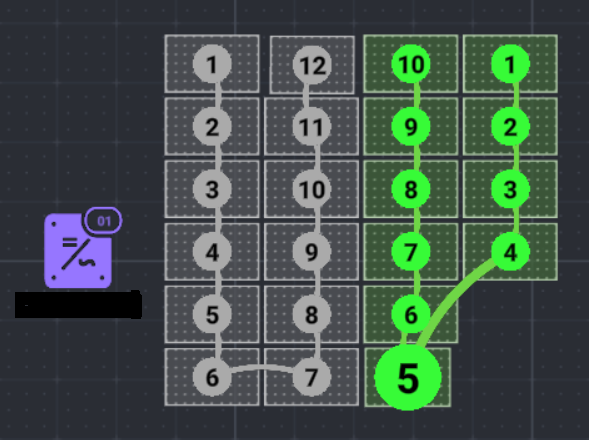
Back to the
The panels that are being sold are far superior
The power the panels produce
Considering your options is good are you leasing or buying the solar system. Leasing you may not have any control over the system, the company takes care of the system maintenance and they own the system. you might break even on your bills or you might not but you don’t have to pay for any damages that happen to the panels or the inverter.
Owning the solar system gives you the option of taking it with you or selling it with the house you own when you decide to sell the house. I am an owning my own stuff kind of guy because throwing solar into a house sale adds value to the investment. The downside is most often you are responsible for if anything happens to the panels or the inverter.
The All you need to know about Tax credit that goes until 2032.
Solar and Batteries
Always consider getting a battery of some type for your home solar system. if it is a good “smart” battery it will save you even more money. It will operate during peak times for energy rates and put the energy back on the grade during slow times. Also, management informed everyone during a safety meeting that typically people with a battery were almost entirely off-grid and the only time they were on the grid was when the system needed maintenance.
Should I Add Critter Guard to my system
This is very difficult decision to decide. Some houses have to have it and some houses never need it. This option is sometime not added to the solar system and some times it is offered. Factors that may influence the decision is food and water sources for pigeons. Bird feeders and sprinklers allow for animals to thrive. There isn’t a way to really tell if a solar system is going to need it. The animals do what they do. we do install this and if you would like to have some installed here is the link.
Solar Inspection and panel washing
We recommend having a solar system inspected after the first two years at least every 2 years and panels washed as necessary in the spring or fall times. In the spring as we are about to get all of that full summer sun and in fall when there is about to be less sun. We do solar inspections and panel washing as well. If you would like to have this service here is the link.
Another list of power companies you might have to deal with in Colorado include, Xcel Energy, Colorado Springs Utilities, United Power, IREA.
Distributors you might buy from Solaris Technology Industry, Inc., Civic Solar, QED, CED, AEE Solar
Some solar schools that you might be interested in taking classes from are, Solairgen Inc , Solar Energy International.
General search terms
Solar Operations and Maintenance, Solar Energy Company, Birds and solar, Pigeons and solar, pigeons nesting under my solar system, critters under my solar, pigeon bird poop everywhere, bird eggs falling off the roof, Bird eggs in the driveway, Pigeon Eggs In the driveway, Solar Fencing, Solar Fence, Solar Fences, Pigeon Eggs in the gutter, something to keep the birds out, Bird Spikes, Bird Nuisances, Pigeon going underneath my solar system, Pigeons underneath. Remove solar system, new roof solar removal, RIP solar system, take off solar system, Broken solar system, hail damaged solar panel, Solar and Pests< solar panel damaged, shattered solar panel, repair broken solar panel, put my solar system back on, take my solar system of, take my solar panels off, take off my solar panels and put it back on, take off my solar system and put it back up, rooftop solar, roof solar, remove half of my solar system, reinstall my solar system, solar repair, my solar inverter isn’t working, micro-inverter failed, micro inverter, micro-inverters failed, micro-inverters, micro-inverter failed, the inverter has an error code, solar detach reattach, detach reattach solar. SolarEdge Solar Edge. Enphase, Enphase Microinverters , Inverter error code, LG Chem, Tesla Power Wall. SMA Inverters, Aurora, Power One, ABB inverters, Fronius Inverters, Fimer, Solivia inverter, Trina Solar, Canadian Solar, REC Solar, LG solar, Longi, Tonlin, Silfab, SunTech, Jinko, Delta inverters, Certainteed CT300mxx-02(failed panels)
Politics
We have to talk about this one because it is an important agenda being pushed. Currently, when you look at California all new homes have to have solar. Not all homes are built to have solar. Also, Who is really benefitting from the power generation? Is the general population or the big industry? The changes to California’s net metering policy cut the value of solar energy credits by about 75 percent for PG&E, SCE, and SDG&E customers. Why is that important? Colorado has a lot of people in charge of the state from California. We typically follow their bad politics.
We are asking people to get involved before its too late and we get swept under the Rug. See our first news letter.
Jonathan Clyburn
Owner Of Raven Solar Services
